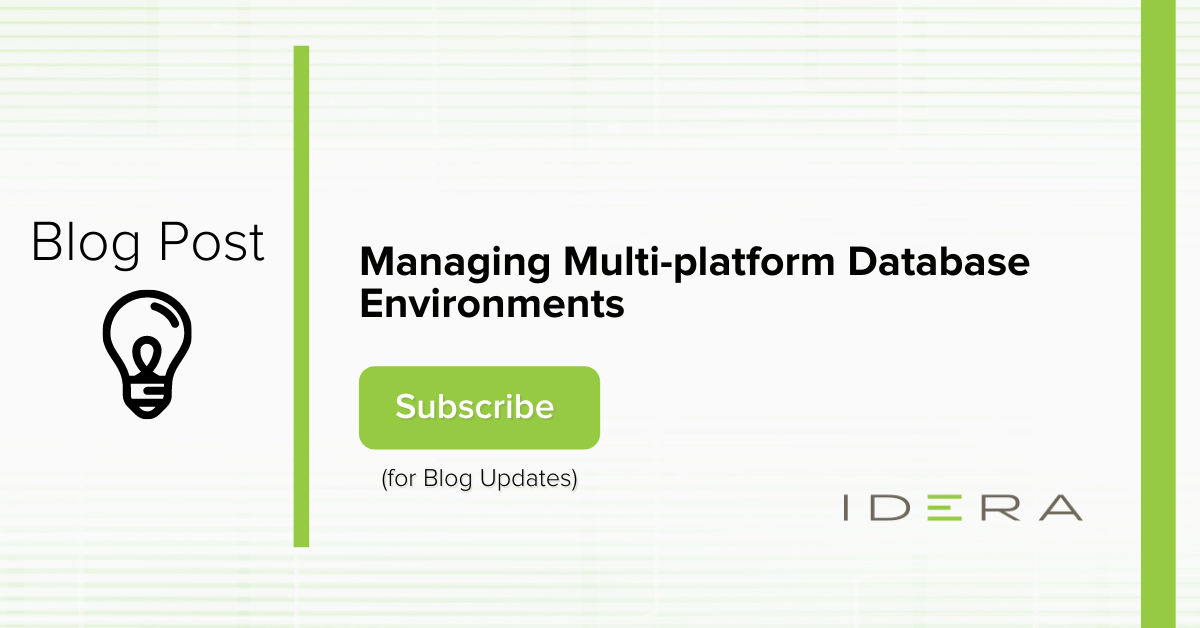Multi-platform database environments help organizations manage multiple databases – a key capability for modern, data-driven organizations.
Modern information technology (IT) departments are becoming increasingly diversified as businesses struggle to cope with the amount of information available. Data-driven organizations that use this wealth of information effectively can achieve a substantial edge over rivals in their market sector.
In the ultra-competitive business landscape of the early 21st century, using data efficiently can be the difference between a successful company and one that consistently fails to meet its goals.
Handling the volume and variety of information associated with Big Data has led to the growth of multi-platform database environments. It has become virtually impossible to process the diverse data streams available to a company using a single type of database.
For example, trying to make sense of the information produced by social media using a traditional relational database approach is probably doomed to failure. Attempting to do so risks missing the important insights contained in the data that can help meet business objectives.
Challenges of Supporting Multi-Platform Database Environments
IT teams tasked with supporting multiple database platforms simultaneously have to navigate some considerable challenges. Database administrators (DBAs) and developers need to be conversant in the idiosyncrasies of more than one platform if they plan to progress in their career path. It is becoming increasingly rare for a DBA to work exclusively with a single database platform.
In a typical workday, a DBA may touch instances of relational databases like SQL Server or Oracle, as well as NoSQL systems located on-premises or in the cloud. Developers may be tasked with adding new features to very different databases to address evolving business requirements.
In addition to having some level of expertise with the diverse databases they must support, teams must be comfortable with the tools they use to interact with their systems. Just as the database platforms all have unique characteristics, so too do the tools used to support them.
Constantly switching between the applications used to develop database queries or analyze data negatively impacts productivity and opens the door for unnecessary and costly mistakes.
Therefore, organizations should consolidate database support tools where possible.
The Benefits Consolidating Database Support Tools
Multiple advantages can be obtained through the consolidation of database support tools, beyond simply cutting licensing and maintenance costs. Following are the key benefits of minimizing the number of support tools a database team needs to do their jobs.
Reduced learning curve
Learning the intricacies of a database support tool can be a time-consuming task. Database professionals faced with the choice of learning the ins and outs of multiple applications or concentrating on one solution that meets their needs will invariably opt for the latter alternative.
Increased productivity
Working with a single tool enables the staff to become more proficient with its functionality than is possible by being challenged with switching among similar yet different solutions. Familiarity with the tool and its capabilities offers a definite productivity boost to the team, allowing them to more easily keep up with their daily responsibilities.
Enhanced collaboration
DBAs working on different platforms can collaborate more effectively when using the same tool. Ideas and techniques are easier to share when they have been developed with a common interface available to the whole team.
Lower software licensing costs
Of course, the financial aspects of support tool consolidation cannot be overlooked. There are direct and immediate savings that come from eliminating extraneous applications in favor of more versatile solutions. A more indirect benefit is achieved by minimizing the number of software upgrades system administrators need to perform to maintain the support tools.
A Versatile Database Support Solution for Multi-Platform Database Environments
Aqua Data Studio offers database teams a versatile and flexible tool that is compatible with over 40 different platforms. Supported platforms run the gamut from popular relational databases like MySQL, Oracle, and Db2 to Snowflake and MongoDB. Database instances running on the Amazon, Google, and Microsoft clouds are also supported by this multipurpose application.
With Aqua Data Studio, DBAs and developers can access and manage all supported platforms from a unified and intuitive interface. From this focused command center they can perform a wide variety of tasks necessary to get the most value from enterprise data resources. Some of the activities facilitated by Aqua Data Studio include:
- Comparing and synchronizing data;
- Creating and managing entity-relationship (ER) diagrams;
- Forward and reverse engineering of databases;
- Developing, sharing, and executing SQL statements;
- Create dashboards and visualizations to share data insights with diverse audiences.
The functionality and versatility of Aqua Data Studio fit perfectly with a mindset focused on consolidating software tools to save money and increase productivity. It’s a valuable addition to any IT team’s software portfolio.
